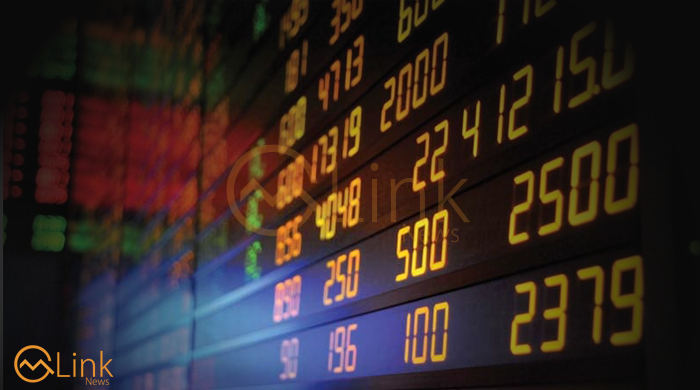July 1, 2021 (MLN): The KSE-100 index has witnessed yet another month of dramatic performance on the back of major developments that happened during the month of June’20 which made everyone glued to spectate the oscillated trend of the market out of curiosity.
Despite the knock of positive developments throughout the month, which are going to be discussed shortly, most of the time market succumbed to selling pressure.
The month of June’21 started off with an aggressive note as the index bull reached the high of 48,878. However, the second half observed a rapid corrective pullback along with losing volumes and after making a low of 46,902, the index ended the month at 47,356 with a net loss of 540 Points.
Contrary to the encouraging returns of 8.2% in May’21, the index ended June’21 with the meager return of 0.5% while, KSE-100 Index clocked at 6.82billion- the highest monthly total since January 2021.
The factors that were enough to rekindled investors’ interest in domestic equities include the announcement of a pro-growth budget for FY22 with incentives and a reduction in tax rates for different sectors of the economy. Especially, the drop in capital gain tax on equities to 12.5% was in line with the capital market expectation and cheered the investors’ sentiments up.
Meanwhile, the remarkable performance of Large-Scale Manufacturing (LSM), which posted a robust 68.07% in April, has left its mark on the market performance during the departed month as well.
Foreign remittances by overseas Pakistanis remained in the limelight as the overall volume has increased by 34% YoY to $2.5bn in May, staying above the $2bn marks for a year. In addition, JP Morgan suggested international investors invest in Pakistan and also estimated that Pakistan will likely achieve 4.7% GDP growth in the FY22.
Investors’ confidence bolstered further on the back of the increase in Foreign Direct Investment (FDI). FDI in Pakistan stood at $198.3million during May’21, showing an increase of 25% MoM against the net inflow of $158.4mn recorded in April 2021. On yearly basis, it surged by 63.34% when compared to the net investment of $121.4mn during May 2020.
During the departed month, the International Islamic Trade Finance Corporation (IITFC) signed a 3-Year Framework Agreement for a cumulative amount of $4.5bn with the Government of Pakistan in order to provide financing for the import of essential commodities such as crude oil, refined petroleum products, LNG, and urea.
Other positive stimulators include the suspension of Pakistan's debt payments of $3.17bn by G-20 countries and the first tranche payment to 20 IPPs which further strengthened the investors’ confidence in the local bourse.
Not to forget, the relaxation in several restrictions related to Covid-19 by the National Command and Operation Centre (NCOC) as the tally of new cases continued to remain below 1,000 has also put a positive impression. This development is a significant hint that the economy is going back towards normalcy via joining the pre-Covid track.
Besides the above-mentioned events, the KSE-100 remained subjected to other not-so-incredible factors that at some point during the month which include the most crucial event of the Financial Action Task Force (FATF) plenary meeting where the conclusion FATF refused to take Pakistan out of the ‘Grey List’ yet again.
In addition, the country witnessed the sixth consecutive current account deficit (CAD) of $632mn in May. Further, MSCI proposed to reclassify Pakistan to Frontier Markets (FM) from Emerging Markets (EM) in its 2021 Market Reclassification Review has dented investors’ sentiments.
On the energy front, the Economic Coordination Committee (ECC) deferred its decision regarding payment to Independent Power Producers (IPPs) established under Power Policy 2002 and the inconclusive talks between Pakistan and the International Monetary Fund (IMF) over a sixth review of the $6bn loan program remained the significant matters to make the market atmosphere dull and dampen.
The not-so-depressed month has also witnessed two IPOs where Citi Pharma Limited (CPL) and Pakistan Almunium Beverages Company (PABC) successfully attracted the investment of Rs2.33bn and Rs10.8bn, respectively.
Sector-wise, Technology & Communication, Food & Personal Care Products, Power Generation & Distribution, and Pharmaceuticals emerged as the best-performing sectors during the month, as they contributed around 99.84, 70.21, 52.75, and 47.53 points respectively to the benchmark index. To be specific, the scrips of SYS (+139), POL (+72), FECPL (+54), and PSX (43) turned out to be the most pleasing ones.
On the other hand, Commercial Banks, Cement, Oil & Gas Marketing Companies, Chemical, and Oil & Gas Exploration Companies remained the poor performers with the loss of -411.09, -334.8, -117.73, -73.84, and -48.66 points. Meanwhile, the scrips of HBL (-234), LUCK (-184), PPL (-87), UBL (-82), and PSO (-79) were the most deteriorated.
During the month, 51 companies traded in green while 49 landed in the red zone. The All-Share Market Cap increased by nearly $5.2bn, i.e. 1.64% lower than the previous month. However, in terms of PKR, the All-Share Market Cap surged by Rs29.65bn i.e, 0.36% higher as compared to the last month.
Figures released by NCCPL showed that foreign investors sold a net $31.86mn worth of stocks during the month with foreign corporates doing the bulk of selling $31.67mn. On the local front, Individual investors purchased $31.86mn worth of stocks, followed by $18.23mn and $9.3mn worth of stocks bought by Local Companies and Mutual Funds, respectively. Other significant transactions included $48.75mn and $11.34mn worth of stocks sold by Insurance Companies and Proprietary Brokers, respectively.
Outlook:
Given the economic numbers and favorable policy, measures post a positive impression and on their back, it may be concluded that Pakistan Stock Exchange would likely have a bullish trend. It is worth mentioning that the expansionary fiscal policy adopted by the government in the recent budget would help the economy to grow further.
According to the report by ACPL, the addition of a further six points in FATF’s action plan, the probable hike in interest rate in coming months amid rising inflationary pressure, and the depreciation of Pak Rupee amid widening of CAD would keep the market performance in check mainly in the short term.
Meanwhile, the equity market is expected to remain range-bound in the coming months on looming economic concerns– the elephant in the room being rising oil prices and the monumental Petroleum Development Levy target for FY22 that could push up domestic fuel prices and eventually reflect in the CPI. And printing of currency could further exacerbate the situation. With the SBP keeping the medium-term inflation targets intact, one cannot rule out the possibility of a monetary policy hike in the coming months, a report by JS Global said.
Copyright Mettis Link News
42020







